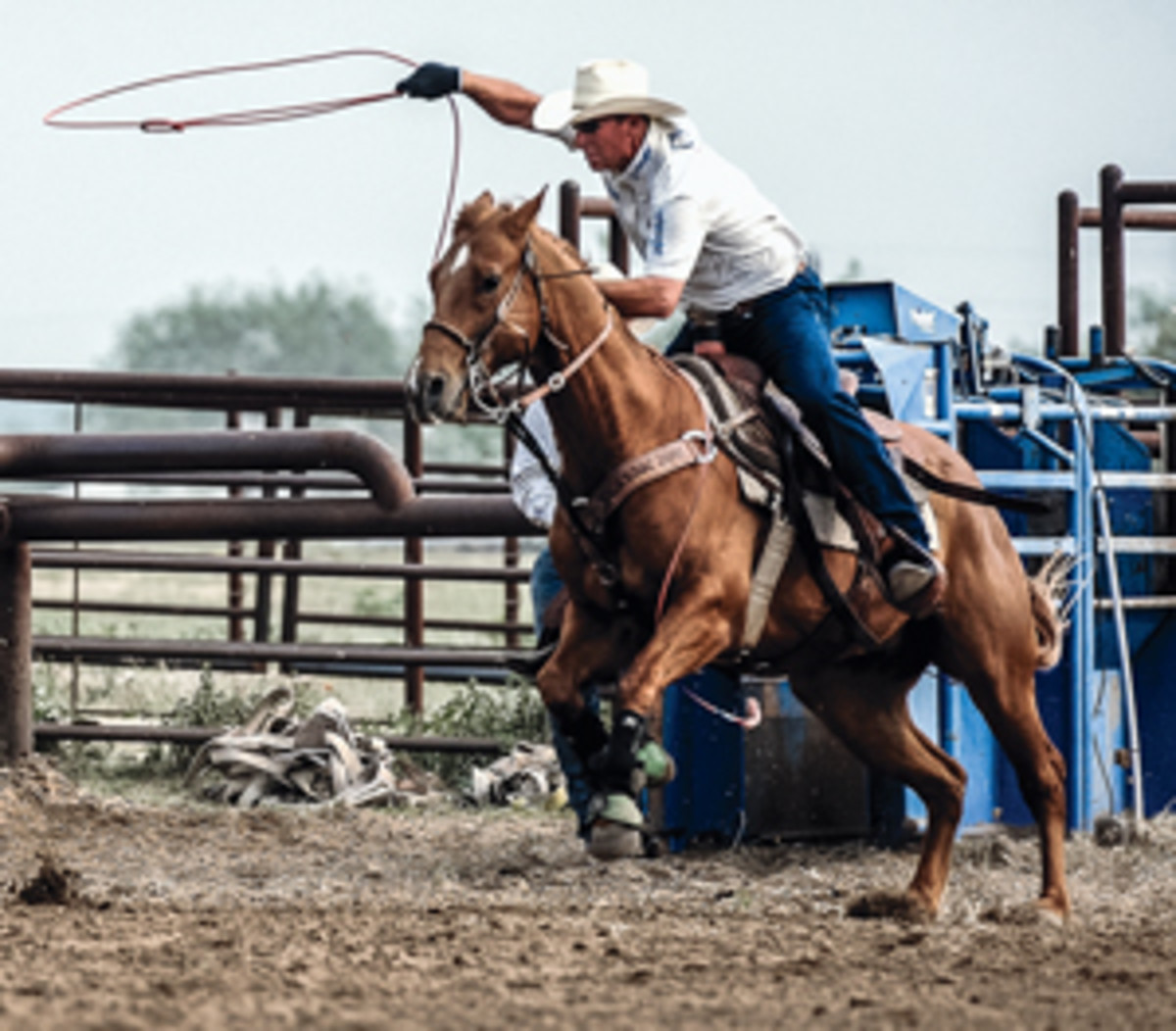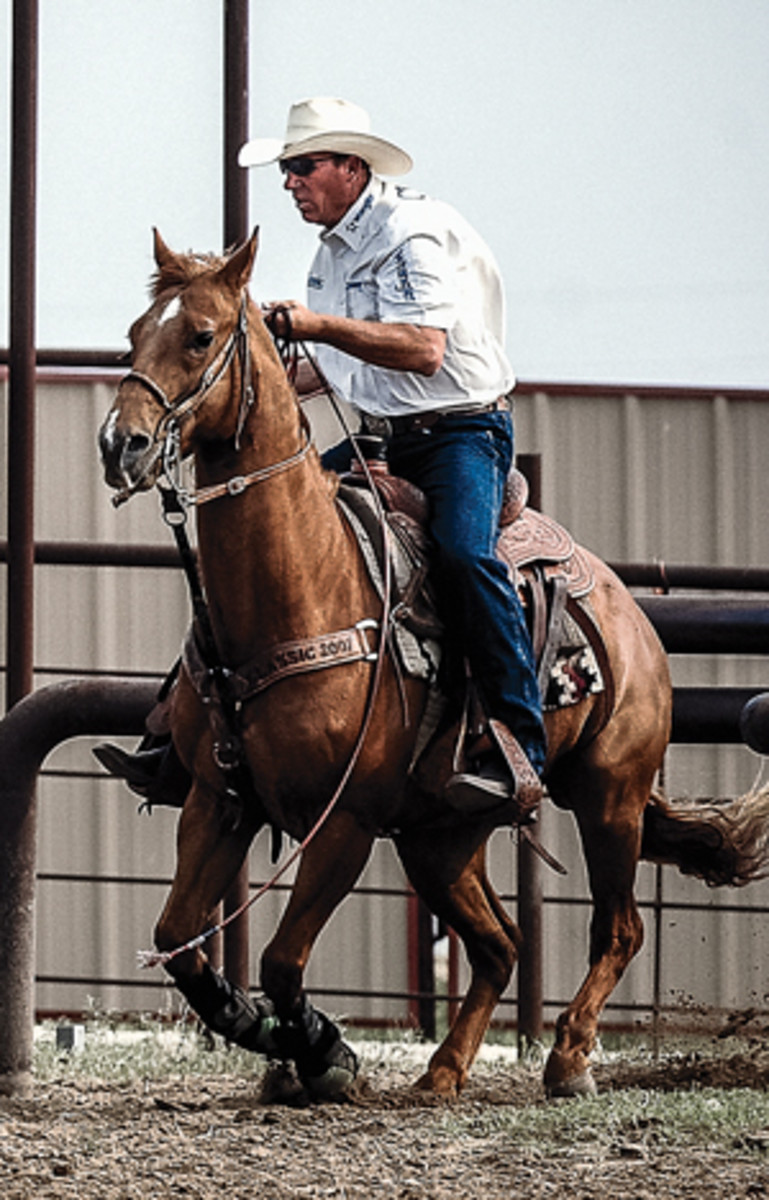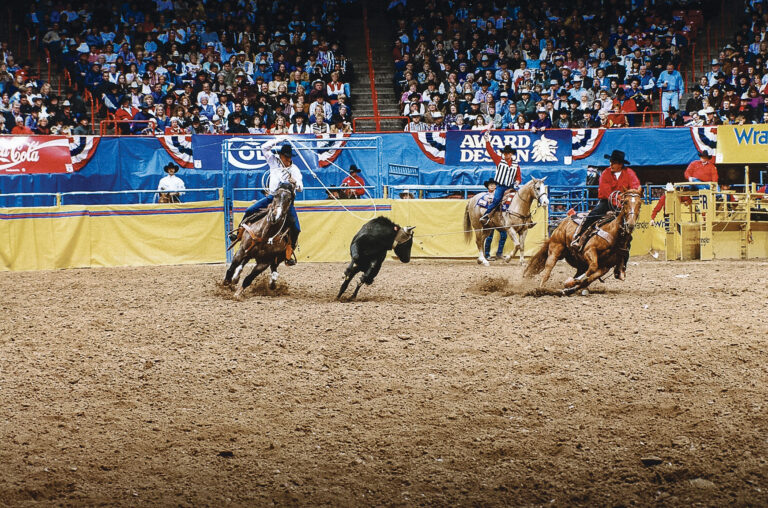
Photos by Lone Wolf Photography
Years ago, when they first came up with a new barrier system—the first one other than the old neck rope and hand-pulled barrier—was in West Texas. The old system was and still is obviously really time-consuming, so people started coming up with other ideas. The first alternative I saw was a guy in West Texas—a producer by the name of S.E. Mayo—who devised a barrier system that used two wands across the heading box that met in the middle. Another one they started using was a lane where the steer tripped a bar and that pulled the barrier. I’ve basically been roping all my life, and there really hasn’t been a substitute for the old neck-rope barrier system. Team roping has advanced leaps and bounds from saddles to ropes and horn wraps, but one thing that hasn’t made that big of an improvement, in my opinion, is barrier systems. People have tried to do things to speed up ropings, but that part of the equation has never caught up. There are just so many malfunctions.
There are so many malfunctions with the double electric eyes used at ropings right now. You’ll swear someone let a steer far enough and he’ll break out, then the next guy beats the steer out of there by a length and gets out. Sometimes a steer will break the eye with his nose, or if his stride’s just right and his head is up he won’t break it until his neck hits that line. So there’s a ton of inconsistency.
There are times the barrier doesn’t work, and it almost comes to blows. There are discrepancies, but there’s no way to prove the eye didn’t work. No one has perfected that aspect of the game. There’s not a roper out there who doesn’t feel like he’s been fouled at the barrier. Ropers bicker. Friendships are tarnished. And still no fool-proof new system to prevent that.

When questions arise about whether or not the barrier is working—I’ve seen them start ropings over and take the 10s off—there’s just no good answer. The technology isn’t fool proof. There are hundreds of ropings every weekend. You’d think it would be worth someone’s time to come up with the next big thing when it comes to barrier systems.
At PRCA (Professional Rodeo Cowboys Association) rodeos there are still a handful of hand-pulled barriers. There’s a lot of room for human error in that situation, where basically there’s a guy with a rope in his hand. He jerks the barrier when he sees the steer cross the line. It’s tough to be perfect if you’re that guy, especially when steers really run.
As a header, the start’s the most crucial thing. So it’s frustrating when you feel like you’re kept guessing by the inconsistency of electric eyes. Sometimes you’re better off trying to play it a little safe, but as tough as it is today that’s a gamble and a Catch-22 situation.
The barrier system that still has the truest read is at the PRCA rodeos, where they have a neck rope. It’s obvious if the barrier doesn’t work, because the pigtail doesn’t fall out of the pin. It’s the most fail-safe method, because if the neck rope comes off the pigtail will still be in the pin, so you obviously know it didn’t work. We need to live with the best we have until an electronics guy out there steps up to the plate and capitalizes on this huge opportunity in our sport.










